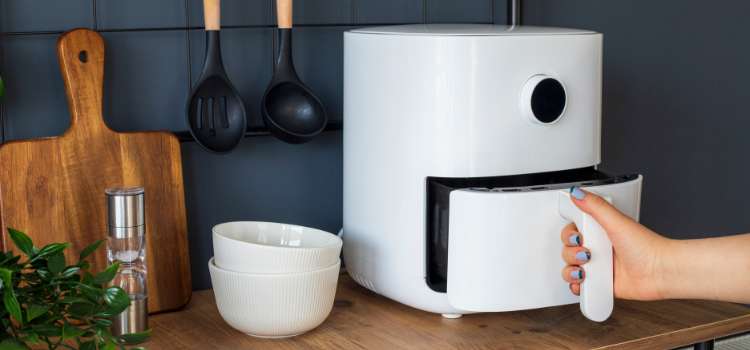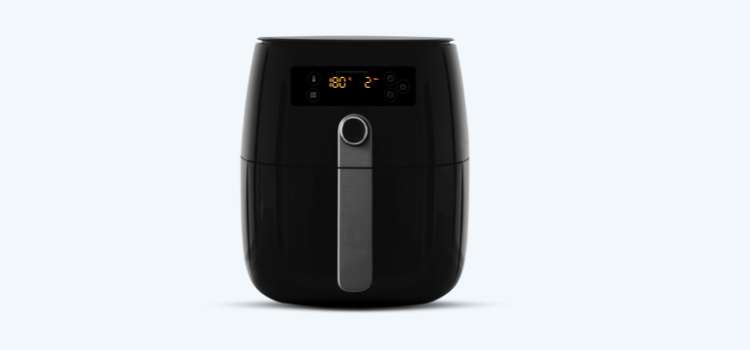As an Amazon Associate, I earn from qualifying purchases

In recent years, air fryers have surged in popularity among home cooks who adore their ability to fry foods using significantly less oil. The convenience, health benefits, and cost-effectiveness have made them a must-have kitchen appliance.
As their popularity continues to grow, a natural question arises: Are air fryers making their way into the professional kitchens of the restaurant world? This article explores the potential for air fryers to be used in restaurants, examining both their advantages and limitations in a commercial setting.
Benefits of Air Fryers for Restaurants
- Health Benefits: Air fryers offer a healthier alternative to traditional frying methods by using hot air technology, which requires significantly less oil. This results in meals that are lower in fat and calories, appealing to health-conscious diners without sacrificing flavor or texture.
- Cost Savings: By reducing oil usage, restaurants can lower their oil expenses, which can accumulate over time. This is particularly beneficial for establishments that frequently serve fried foods, helping to improve profit margins in an industry with tight financial constraints.
- Versatility: Air fryers are compact and multifunctional appliances that can roast, grill, bake, and fry—all in one unit. This versatility is especially beneficial for smaller restaurants or food trucks with limited kitchen space, allowing them to expand their menu options without the need for multiple devices.
- Speed and Efficiency: Air fryers can significantly cut cooking times, which is crucial in a fast-paced restaurant setting. Faster cooking leads to quicker service, enhancing customer satisfaction and increasing table turnover rates.
Potential Drawbacks
Drawbacks of Using Air Fryers in Restaurants:
- Limited Capacity:
Most air fryers are designed for home kitchens, resulting in a restricted capacity that may not accommodate the demands of a busy restaurant. High-volume establishments might need to invest in multiple units or larger commercial models, which can significantly increase costs.
- Maintenance Requirements:
Although air fryers are relatively easy to maintain, they still necessitate regular cleaning and upkeep to ensure optimal performance. This added maintenance task can burden kitchen staff, contributing to their overall workload.
- Texture and Taste Differences:
While air fryers can produce tasty results, some chefs believe they can’t replicate the same texture and flavor achieved through traditional frying methods. This is particularly evident in specific dishes where crispiness and flavor depth are crucial for customer satisfaction.
Examples of Restaurant Types That Might Use Them

Despite these challenges, several types of restaurants might find air fryers a valuable addition to their kitchen arsenal. Fast-casual dining establishments that emphasize healthier menu options are prime candidates. These restaurants can use air fryers to offer fried foods with less guilt, appealing to health-conscious diners.
Small cafes or bistros with limited kitchen space might also benefit from air fryers. The compact size and multifunctionality can help these establishments maximize their output without needing extensive kitchen equipment.
Furthermore, niche restaurants that focus on innovative cooking methods or experimental cuisine might incorporate air fryers as a way to offer unique menu items. These establishments are often early adopters of new technology, seeking ways to differentiate themselves in a competitive market.
Comparison to Traditional Frying Methods
When comparing air fryers to traditional frying methods, several factors come into play. Taste and texture are often the most debated points. Traditional frying is known for creating a distinct, rich flavor and a perfectly crisp texture that air fryers attempt to replicate but don’t always match.
Consumer perception also plays a role. Some diners may be skeptical of air-fried foods, perceiving them as less authentic or flavorful. On the other hand, the growing trend towards health and wellness might sway customer preferences in favor of air-fried options.
From an energy efficiency standpoint, air fryers generally consume less electricity than traditional fryers, making them a more environmentally friendly option. This can also contribute to cost savings, as energy expenses in commercial kitchens are significant.
Conclusion
In conclusion, while air fryers are not yet a staple in the majority of restaurant kitchens, they offer intriguing possibilities. The health benefits, cost savings, and versatility make them an attractive option for certain types of establishments. However, limitations in capacity, texture differences, and maintenance needs are challenges that restaurants must consider.
FAQ
Can you use air fryers in a restaurant?
Yes, air fryers can be used in restaurants, especially in small cafes or health-focused establishments. They offer healthier cooking with less oil and can be space-efficient. However, their limited capacity may not suit high-volume restaurants, and chefs must adapt recipes to maintain desired textures.
Do real chefs use air fryers?
Some chefs do use air fryers, particularly those focused on healthier cooking techniques or innovative culinary methods. While traditional chefs may prefer conventional methods for certain dishes, air fryers offer convenience and versatility, allowing chefs to experiment with a range of recipes and cooking styles.
Does Gordon Ramsay use an air fryer?
Gordon Ramsay has not specifically endorsed air fryers as a primary cooking tool, but he appreciates innovative cooking technologies. His culinary approach focuses on traditional techniques, yet he acknowledges the benefits of air fryers for home cooks seeking healthier options without sacrificing flavor or convenience.
Where not to use an air fryer?
Avoid using air fryers in confined, unventilated spaces or near flammable materials due to heat and potential smoke. Ensure proper clearance on all sides to prevent overheating. They are not suitable for high-volume commercial kitchens needing large-scale frying, as their capacity is typically limited to smaller batches.
As an Amazon Associate, I earn from qualifying purchases